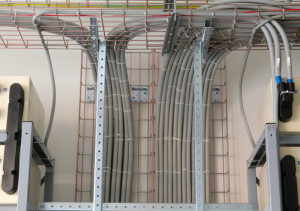Power supplies are the unsung elements of electronic devices. Not as exciting as a processor or a high-definition display, they are nevertheless a crucial element in the construction of any computer, amplifier or telecommunication network.
There are three factors that affect the reliability of a power supply – its design, its exposure to stresses, and the choice of components used in its construction. Here’s a look at each area and its associated problems.
1. Power supply design – achieving desirable complexity

The paradox of power supply design is that the more components it contains – the more complex it is – the more likely it is that one of these components will fail. However, leaving out a component may also result in a power supply’s failure. At a certain point in its design, a desirable complexity is achieved, where the product is as simple and also as complicated as it needs to be. For instance, a high-performance laboratory power supply may include digital coding of voltage and power settings, a built-in component not needed in a PBX power supply.
A power supply must be designed with one eye on the operating conditions generated within it for each component, no matter how small. For example, it’s known that increased heat in an electronic system increases failure rate dramatically. One power supply may be designed so that a semi-conductor used in its construction is operating at its recommended operating temperature of 75°C. But in another design, a chip may be operating at 150°C, way above its recommendation. This kind of problem is especially common.
Because low reliability figures for power supplies have more impact on an electronic system’s failure rate than any other part of the system, not taking into account the requirements of each component in power supply design increases the risk of a general failure. So a data network, telecommunications system, computer server or wireless base station can be put out of operation because of one tiny, overheating diode in its poorly designed power supply.
2. Impact of stress on a DC power supply
Thermal stress is the most challenging to a DC power supply – a 1,000 watt supply is producing 100 watts of heat even when it’s operating efficiently. If there is not enough heat dissipation in the form of heat sinks, venting and mechanical fans, components like capacitors may dry out and circuit boards can warp.
Another type of stress is mechanical. Vibration can cause components to come loose, or a circuit board may be too thin for the components it holds, which could cause it to deform. A third form of stress is electrical. For example, a capacitor that is rated at 100 volts may occasionally be hit with a spike of 160 volts, which over time results in premature aging.
3. Component selection for power supply reliability
Over-specification is a useful rule of thumb when choosing components for a DC power supply. One way to do this is to use components at well below their maximum rated specifications. So a component rated to a maximum of 85°C will behave more reliably if it is part of a circuit that operates at 50°C.
There is also what’s known as inherent or generic reliability – some types of components are more reliable than others. Fixed resistors are more reliable than potentiometers, for instance, and film capacitors more reliable than other types. Specifically, polypropylene film capacitors are routinely preferred in high current DC designs because of their low dissipation factor.
Improving reliability in a DC power supply means using quality components and creating a simple, robust design that takes into account the stresses the device will experience during operation.

